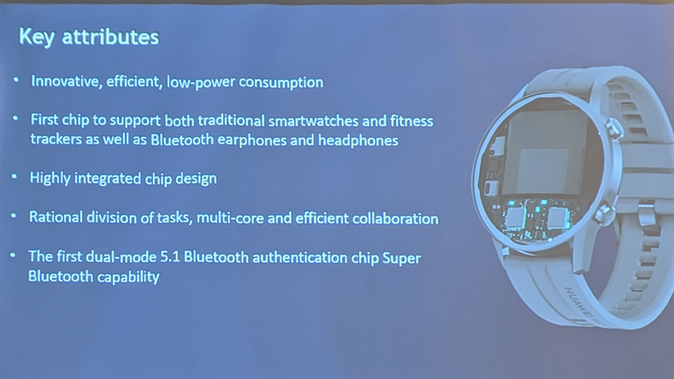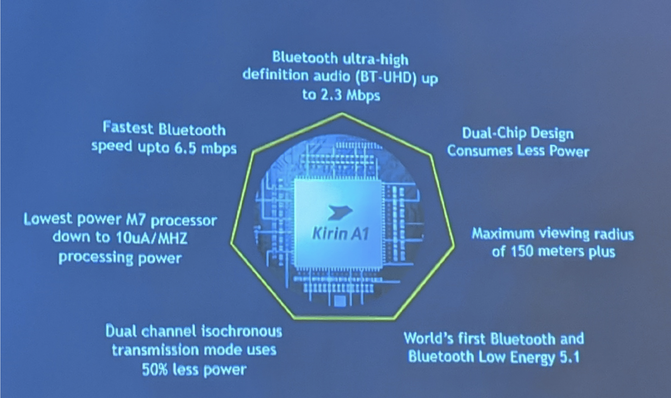Vertical Divider
|
Wearables
Huawei Targets Wearables w/Kirin A1 Chipset The uncertainty due to the Sino-US trade conflict has led to much confusion about GMS (Google Mobile Services) support on Huawei and Honor smartphones. Despite the limited availability of the Huawei Mate 30 Pro and the Mate X, the pace of innovation hasn’t dialed down even a bit and Huawei has been working on its first-part operating system called Harmony OS. Meanwhile, they are also vying to build their own ecosystem of accessories and smart wearables, and has developed the Kirin A1 SoC dedicated to the category of products. The Kirin A1 chipset is not dedicated to a specific type of product and can be used to drive a wide array of wearables. The Huawei FreeBuds 3 and the Watch GT 2 are two of the products that already use the chipset and Huawei intends to launch more products like AR Glasses, over-the-year as well as neckband-style wireless headsets, and Bluetooth speakers. |
|
Huawei will be launching some products with the Kirin A1 chipset next month in India. The key highlights of the Kirin A1 chipset include a dual-chip design and support for Bluetooth 5.1 and BLE 5.1 protocols. The latter helps the Kirin A1 switch back to the low-energy mode whenever possible, thereby resulting in power consumption as low as 10mA per MHz which, as per Huawei, is nearly one-third of similar wearable-centric chips from other manufacturers. For truly wireless earphones, the chipset supports isochronous Bluetooth connectivity which means that both of the earbuds can connect to the input source independently. The range of Bluetooth connections on devices using this chip is 150 meters (~500 ft / 165 yards).
Figure 1: Kirin A1 Functional Outline & Attributes
Figure 1: Kirin A1 Functional Outline & Attributes
Source: xda, HiSilicon
Huawei’s Kirin A1 chip uses a single-core Arm Cortex M7 processor with a maximum frequency of 200MHz. The 4.3 x 4.4 mm die consists of a Bluetooth chip, an audio processing unit, a “low-power” application processor, and a power management unit. Huawei says the chipset is designed to deliver accurate readings and low-latency readings from multiple sensors and high-quality aural experience on audio accessories.
|
Contact Us
|
Barry Young
|


